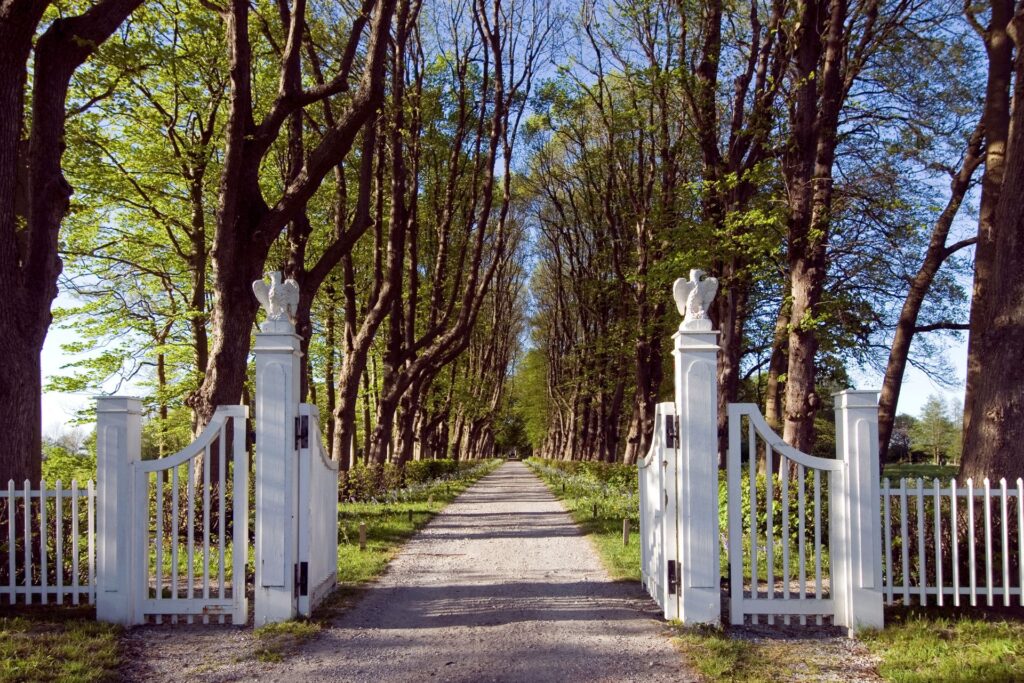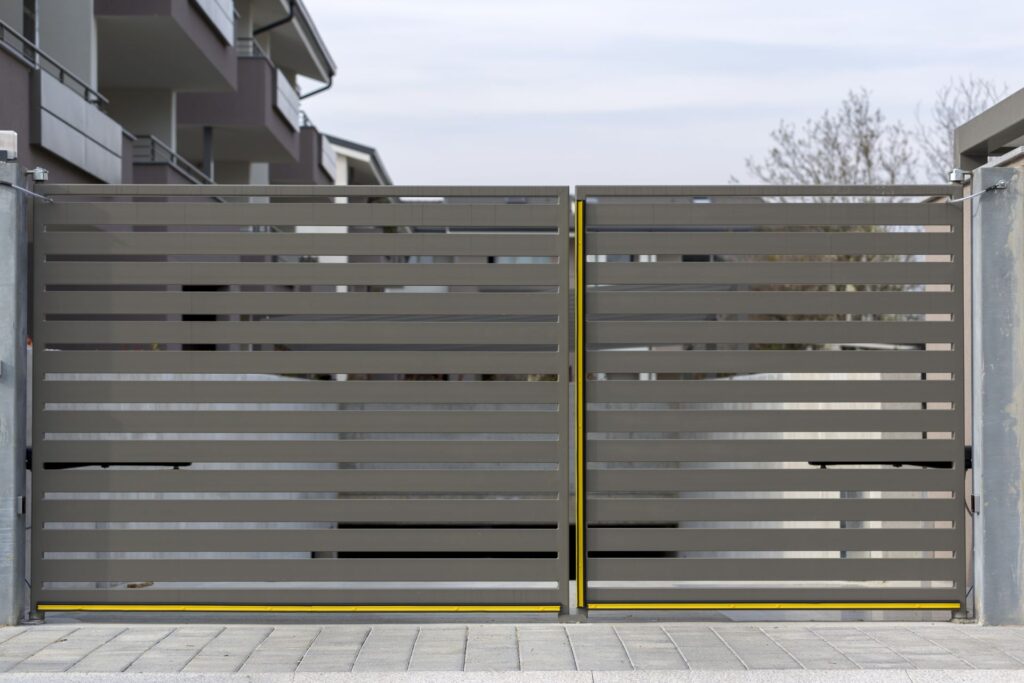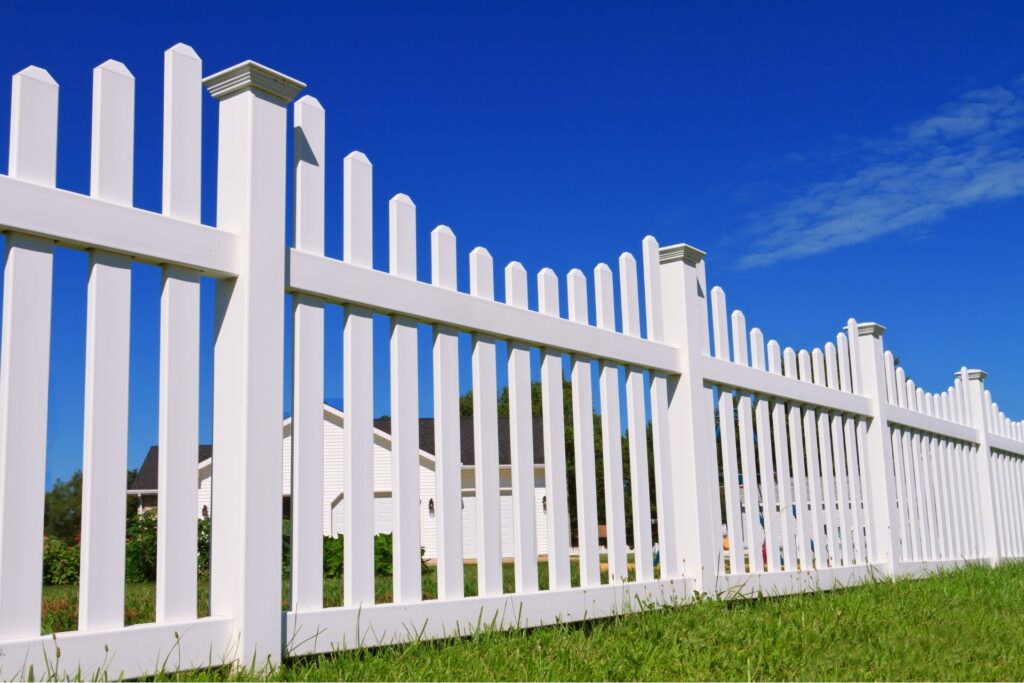Welcome to your comprehensive guide on navigating the nuanced world of building fences along shared driveways in New Zealand. Tackling a home improvement project, especially one that treads into the territory of shared spaces, is no small feat. With a mixture of excitement for enhancing your home’s privacy and perhaps a bit of apprehension about the legalities and neighborly relations, you’re not alone. This guide is designed to walk you through every step of the process, from understanding the legal landscape to striking the perfect balance with your neighbors. Let’s embark on this journey together, ensuring your fencing project not only meets your needs but also harmonizes with the wider community.
When you plan to put up a fence along a shared driveway in New Zealand, talking to your neighbor and getting their buy-in is crucial. According to the Fencing Act, usually, both you and your neighbor split the costs and decisions. Make sure to find out if you need a permit from your local council, which might depend on how tall the fence is or what it’s made of. Choose a fence design that looks good with both homes, and it might be a good idea to get a surveyor to help with the property lines. If any disagreements come up, resolving them through mediation is best, highlighting how important it is to have clear agreements and respect each other to keep the peace in the neighborhood.
Table of Contents
Overview Of Shared Driveways In NZ
When navigating the residential landscapes of New Zealand, you’ll frequently encounter a unique and practical aspect of property design – shared driveways. These driveways are a common sight across the country, weaving through suburbs and housing areas, offering a distinctive solution to space and access issues in densely populated regions. But what exactly is a shared driveway, and how is it governed by the laws of New Zealand? In this article, we’ll delve into the essence of shared driveways, exploring their legal frameworks, reasons for their prevalence, and the typical challenges they present, all while emphasizing the importance of clear guidelines to mitigate potential disputes.
What Constitutes a Shared Driveway?
A shared driveway in New Zealand refers to a pathway or access route that is used by more than one property owner for vehicular or pedestrian access to their homes or land. Unlike a private driveway, which serves a single property, a shared driveway is a communal resource, offering passage to multiple properties. This arrangement is particularly common in urban areas where space is at a premium and in subdivisions where efficient use of land is paramount.
The legal framework governing shared driveways in New Zealand is primarily rooted in property law, with specific attention to easements. An easement is a legal right that allows someone to use of a portion of another person’s land for a specific purpose. In the case of shared driveways, an easement typically grants the owners of adjacent properties the right to use the driveway for access. The details of these rights and responsibilities are usually outlined in the property’s title documents, ensuring that all parties are aware of their obligations.
Why Are Shared Driveways Common in New Zealand?
Shared driveways are a staple in New Zealand’s residential design for several reasons. First and foremost, land availability and the desire to maximize the use of space drive the necessity for such communal passages. By sharing a driveway, property developers can efficiently use the land, allowing for more homes within a smaller footprint. This design approach is particularly advantageous in urban areas, where space is a premium commodity.
Additionally, shared driveways foster a sense of community among neighbors. By sharing a common resource, residents often find themselves interacting more frequently, potentially leading to stronger neighborhood ties.
Typical Issues and the Importance of Clear Guidelines
Despite the practicality and community benefits, shared driveways can also be a source of contention among property owners. Common issues include disputes over maintenance responsibilities, disagreements about the extent of use, and challenges related to parking. These problems often stem from a lack of clear communication and misunderstandings about the legal obligations each party holds.
To mitigate these potential disputes, it is essential to have clear and accessible guidelines. These guidelines should cover maintenance responsibilities, usage rights, and any restrictions. Having a written agreement or understanding, ideally included within the property’s legal documents, can significantly reduce the likelihood of conflicts. Additionally, open communication among the users of a shared driveway is crucial. Regular meetings or discussions can help ensure that all parties’ needs and concerns are addressed, maintaining a harmonious shared space.

Considerations And Regulations
Constructing a fence along a shared driveway involves navigating a complex web of legal considerations and regulations to ensure compliance and maintain positive relations with neighbors. This guide delves into the intricacies of the legal framework governing such constructions, highlighting the significance of the Fencing Act of 1978, relevant local council regulations, and the critical roles of title deeds and easements. Our aim is to provide homeowners and property developers with a detailed, practical understanding of their rights and responsibilities, fostering a smooth and compliant fence construction process.
Legal Considerations for Fence Construction
When planning to erect a fence along a shared driveway, understanding the legal landscape is paramount. This undertaking is not just about enhancing privacy or security; it’s a legal process regulated by specific statutes and local ordinances designed to protect the interests of all parties involved. The foundation of this process is laid by the Fencing Act of 1978, complemented by local council regulations that cater to the unique needs of communities. Moreover, the legal documentation associated with your property, including title deeds and easements, plays a crucial role in defining what can and cannot be done.
Delving into the Fencing Act of 1978
The Fencing Act of 1978 provides a comprehensive legal framework that details the obligations and rights concerning fence construction on property boundaries. Its provisions aim to ensure equity and cooperation among neighbors, highlighting several key aspects:
Equitable Cost Sharing: A fundamental principle of the Act is that neighbors should equally share the costs related to erecting, maintaining, or replacing a boundary fence. Exceptions exist, especially if there’s an agreement for a different arrangement or one party desires a fencing solution that exceeds standard requirements.
Formal Notice and Agreement: Prior to initiating construction, the party proposing the fence must send a formal notice to their neighbor. This notice should outline the work details, cost estimates, and a contribution request. This step is crucial for transparency and agreement before any physical work commences.
Mechanisms for Dispute Resolution: Disagreements can arise, and the Act outlines clear pathways for dispute resolution. These include mediation services and, if necessary, legal intervention to resolve disputes fairly and legally.
Understanding and complying with the Fencing Act is essential for anyone considering a fence along a shared boundary, ensuring that the project proceeds smoothly and without legal hiccups.
Local Council Regulations: A Closer Look
The role of local council regulations cannot be overstated in the context of fence construction. These regulations are designed to address the specific needs and concerns of local communities, including:
Design and Aesthetic Considerations: Councils often have specific guidelines regarding fence height, materials, and design to maintain the character and safety of neighborhoods.
Permitting Process: Many fencing projects require a permit from the local council, especially if they exceed certain height thresholds or are located in specific areas. Understanding and adhering to these requirements is essential to avoid potential penalties.
Safety and Visibility: Special regulations may apply to ensure that fences do not obstruct visibility for drivers and pedestrians, particularly around driveways and corners. Compliance with these rules is crucial for public safety and legal conformity.
The Significance of Title Deeds and Easements
Title deeds and easements hold critical information that can influence your fencing project. Title deeds may contain covenants or restrictions specific to your property, including fencing stipulations. Easements, granting rights such as access or utility passage over your land to another party, can also dictate fencing possibilities. Before embarking on fence construction, a thorough review of these documents is advisable to identify any potential legal barriers or requirements, ensuring your project does not infringe on established rights or obligations.
Erecting a fence along a shared driveway is more than a physical project; it’s a legal endeavor that demands careful consideration of established laws and regulations. By grounding yourself in the Fencing Act of 1978, staying abreast of local council requirements, and understanding the implications of title deeds and easements, you can navigate these legal waters with confidence. This thorough approach not only ensures compliance but also promotes harmony between neighbors, paving the way for a successful and dispute-free fencing project. Remember, when in doubt, consulting with legal experts or local authorities can provide clarity and guidance tailored to your specific situation.
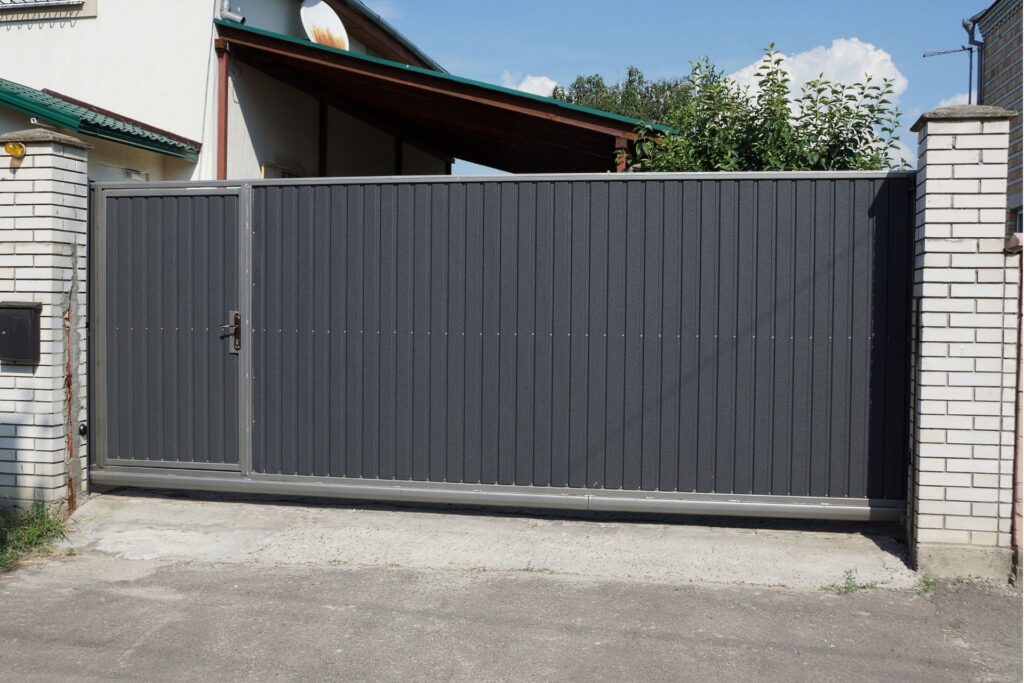
Communicating With Your Neighbors
When it comes to enhancing your property with a new fence, the significance of engaging in open and respectful communication with your neighbors cannot be overstated. This vital step not only fosters a harmonious community atmosphere but can also pave the way for smoother project execution. Below, we delve into the essence of neighborly dialogue before fence construction begins and share practical tips for initiating discussions and forging agreements.
The Importance of Open Communication
Engaging in open communication with your neighbors before embarking on fence construction serves multiple crucial purposes. Firstly, it builds trust and respect, laying the groundwork for a positive and ongoing relationship. Secondly, it ensures that your project aligns with local regulations and neighborhood standards, potentially saving you from future legal and financial headaches. Lastly, discussing your plans can reveal opportunities for collaboration, such as sharing costs or design ideas, which can lead to mutually beneficial outcomes.
Initiating the Conversation
Starting a conversation about your fencing project might seem daunting, but it’s easier than you think. Here are a few tips to guide you:
Timing is Key: Choose a moment to talk when your neighbor is not busy or stressed. A calm, casual setting can facilitate a more productive and positive discussion.
Be Prepared: Before you approach your neighbor, have a clear idea of what you want to discuss. Bring along any relevant plans or drawings to help visualize your ideas.
Listen and Empathize: Remember, communication is a two-way street. Be open to hearing your neighbor’s views and concerns. Showing empathy and willingness to accommodate their feedback can lead to a more amicable agreement.
Reaching Agreements
Once you’ve opened the lines of communication, the next step is to work towards an agreement that satisfies both parties. Here are strategies to ensure a smooth process:
Shared Contract or Agreement Letter: Consider drafting a shared contract or agreement letter. This document should detail the project specifics, including timelines, design, costs, and maintenance responsibilities. Having a formal agreement can prevent misunderstandings and provide clarity for both parties.
Professional Mediation: If you encounter disagreements or complex issues, professional mediation can be a valuable resource. A neutral third party can help navigate the discussion towards a fair and balanced resolution.
Follow-Up Communications: After reaching an initial agreement, keep the lines of communication open. Regular updates about project progress or any changes can help maintain a positive relationship and ensure the project goes smoothly.
The foundation of any successful fencing project lies in effective and open communication with your neighbors. By approaching discussions with respect, preparation, and a willingness to listen, you can foster a cooperative environment that benefits everyone involved. Remember, the goal is not just to build a fence, but to maintain and strengthen the community bonds that make your neighborhood a pleasant place to live.
Incorporating these strategies into your planning process can transform potential challenges into opportunities for collaboration and mutual respect. So, before you take the first step towards constructing your new fence, take a moment to consider the value of a friendly conversation with your neighbor—it’s an investment that pays dividends in goodwill and community harmony.

Design Guidelines For Fences On Shared Driveways
Creating the perfect fence for a shared driveway requires careful consideration of both functionality and aesthetics. It’s not just about setting boundaries; it’s about crafting a harmonious balance between privacy, security, and accessibility. In this comprehensive guide, we delve into the best practices for designing fences in shared spaces, focusing on crucial aspects like height, materials, and overall look. Whether you’re a homeowner looking to update your shared driveway or a designer seeking inspiration, this article will equip you with the knowledge needed to make informed decisions that cater to both practicality and style.
Understanding the Importance of Fence Height
The height of a fence in a shared driveway is not just a matter of security; it’s a delicate balance between privacy and openness. A too-tall fence might offer privacy but can make the space feel cramped and unwelcoming. Conversely, a too-short fence might not provide enough privacy or security. The ideal height for a shared driveway fence is usually between 4 to 6 feet. This range ensures enough privacy for both parties while keeping the area feeling open and accessible. However, always check local zoning laws and homeowners association (HOA) rules, as they may have specific requirements or restrictions regarding fence height.
Choosing the Right Materials
The material of your fence plays a significant role in both its functionality and aesthetics. When it comes to shared driveways, durability, and maintenance are as important as appearance. Wood, vinyl, aluminum, and composite are popular choices, each with its pros and cons:
Wood offers a classic look and can be painted or stained to match any aesthetic. However, it requires regular maintenance to prevent rot, warping, and termite damage.
Vinyl fencing is low-maintenance and comes in various styles and colors. It’s durable and resistant to weathering but can be more expensive upfront.
Aluminum is lightweight, durable, and requires minimal upkeep. It’s an excellent choice for a sleek, modern look but may not offer as much privacy as other materials.
Composite materials combine wood fibers and plastic to create a durable, low-maintenance option that mimics the look of wood without the upkeep.
Aesthetics Matter
When designing a fence for a shared driveway, aesthetics are just as important as functionality. The fence should complement both properties and create a cohesive look. Consider the architectural style of the homes and choose a design that enhances the overall street view. A well-designed fence can add curb appeal and even increase property values.
Enhancing Security and Privacy
A fence can significantly enhance the security and privacy of a shared driveway, but it’s important to choose a design that doesn’t sacrifice accessibility. Consider adding lockable gates for added security while ensuring they’re easy for all parties to open and close. For privacy, solid panels or closely spaced pickets can prevent outsiders from looking in without blocking light or airflow.
Respecting Shared Access Needs
The key to designing a fence for a shared driveway is to ensure that it respects the shared access needs. The design should allow easy entry and exit for both properties and not obstruct visibility for drivers. Communication with your neighbor is crucial to ensure that the fence meets both parties’ needs and preferences.
Designing a fence for a shared driveway doesn’t have to be a daunting task. By considering height, materials, and aesthetics, and focusing on enhancing security and privacy while respecting shared access, you can create a fence that meets all your needs. Remember, a well-thought-out fence design can not only serve its practical purposes but also add to the beauty and value of your property. Engaging in open communication with your neighbor throughout the process will ensure that the final design is beneficial and satisfactory for all involved.
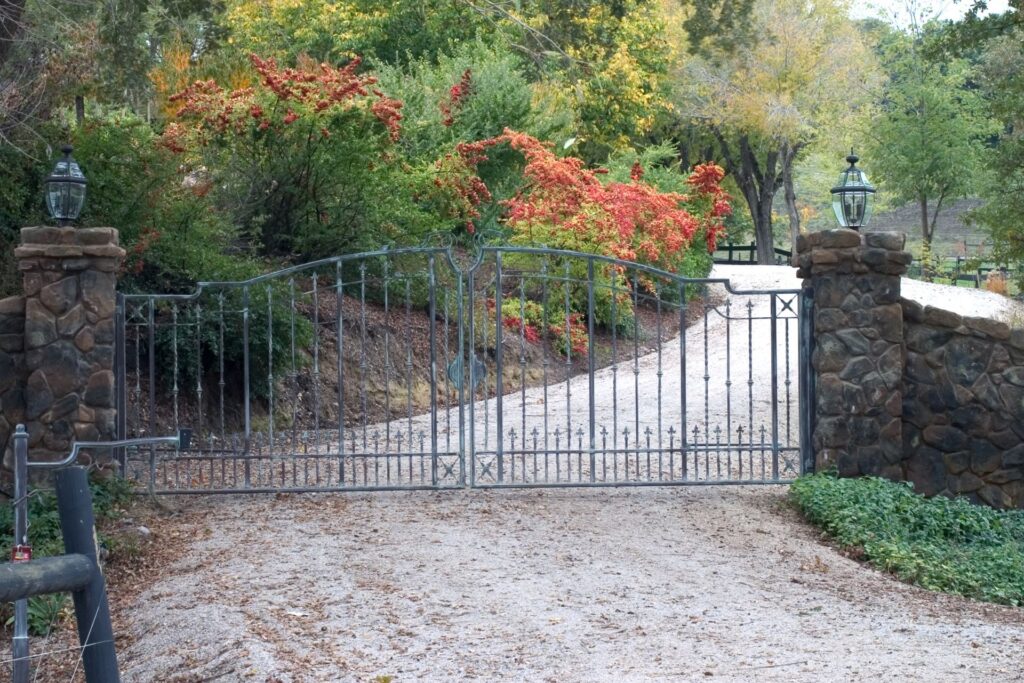
Navigating The Consent Process
Building a fence in New Zealand might seem straightforward, but it’s essential to be aware that in some situations, you may need to obtain consent before proceeding. Understanding when and why this is necessary, along with how to navigate the consent process smoothly, can save you time, money, and potential legal headaches.
When and Why Consent May Be Required
In New Zealand, the need for building consent for fence construction largely depends on the height and location of the fence you plan to build. According to the Building Act 2004, fences under 2.5 meters in height generally do not require building consent. However, there are exceptions to this rule. For instance, if your fence is intended to serve as a pool barrier, different rules apply, and consent is likely needed regardless of height.
Consent may also be required if your fence could impact road visibility at intersections, or if it’s being built in a heritage area where specific regulations protect the local aesthetic and historical value. The rationale behind these rules is to ensure safety, privacy, and harmony within communities, while also preserving the unique characteristics of special areas.
Applying for Consent
The process for applying for consent begins with your local council. Here’s a step-by-step guide to making it as smooth as possible:
Research: Before you do anything, visit your local council’s website. They often provide guidelines and application forms specifically for fence construction. Understanding the specific requirements for your area is crucial.
Consultation: If you’re unsure about whether your project needs consent, or if you have questions about the process, don’t hesitate to contact your local council. They can provide clarity and guidance, helping you avoid unnecessary work or delays.
Application: When applying, you’ll need to provide detailed plans of your proposed fence, including heights, materials, and exact placement. Make sure these plans are clear and comply with any local bylaws or regulations to facilitate a smoother approval process.
Neighbour Consultation: Even if not legally required, discussing your fencing plans with neighbors can prevent disputes and ensure that everyone’s interests are considered. This step is about fostering good relationships as much as it is about procedural compliance.
Navigating the Consent Process
Dealing with local councils can sometimes be challenging, but there are ways to make the process smoother:
Be Prepared: Have all your documents, plans, and any required forms completed and organized. This shows you’re serious and well-informed, which can expedite your application.
Follow Guidelines: Adhere strictly to your council’s guidelines for fence construction and the consent application process. This reduces the chances of your application being delayed or denied due to compliance issues.
Communicate Effectively: Keep communication lines open with your council. Be responsive to their requests for additional information or clarifications. Effective communication can significantly speed up the consent process.
Seek Professional Help: If the process seems overwhelming, consider hiring a professional, such as a licensed building practitioner or an architect, who understands the local regulations and can help navigate the consent process on your behalf.
Navigating the consent process for fence construction in New Zealand requires a bit of legwork and an understanding of local regulations. By being prepared, informed, and proactive, you can ensure that your fencing project proceeds without unnecessary delays or legal issues, allowing you to enhance your property with peace of mind.
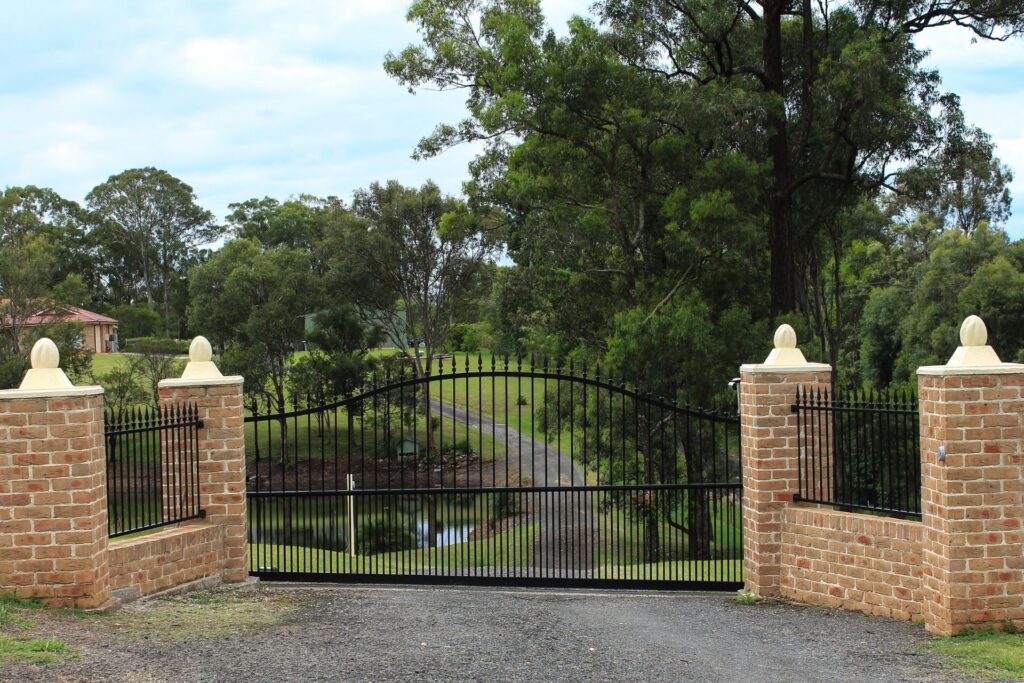
Resolving Disputes And Seeking Mediation
When it comes to fence construction between neighbors, disagreements can quickly escalate, turning an otherwise peaceful coexistence into a contentious one. However, there are effective ways to handle these disputes amicably, ensuring that both parties feel heard and respected. In this detailed guide, we’ll explore practical advice on resolving disagreements over fence construction, highlight steps for informal resolution, and discuss when it’s time to seek mediation. Additionally, we’ll point you toward valuable resources for dispute resolution, such as community law centers and the Disputes Tribunal, to help you navigate these choppy waters smoothly.
Open Lines of Communication
The foundation of resolving any disagreement, especially one as common as fence construction between neighbors, lies in open and honest communication. Before taking any formal steps, approach your neighbor in a friendly manner to discuss the issue. It’s often the case that a simple misunderstanding or lack of communication has led to the disagreement. When initiating the conversation:
- Choose a neutral time and place to talk.
- Clearly express your concerns and listen to your neighbor’s perspective.
- Aim for a constructive dialogue focused on finding a mutual solution.
Seek Informal Resolution
If direct communication doesn’t lead to a resolution, consider drafting a simple agreement that outlines each party’s concerns and proposed solutions. This step often helps clarify the issues and solidify a path forward. During this phase:
- Be willing to compromise and find a middle ground.
- Document any agreements in writing to ensure both parties have a clear understanding of the proposed solution.
Utilize Resources for Dispute Resolution
When informal efforts falter, it’s wise to tap into available resources designed to assist in dispute resolution without escalating to legal action. Community law centers offer free or low-cost advice and can guide you through the mediation process. Mediation is a structured yet informal process where a neutral third party helps facilitate a conversation to reach a mutually acceptable agreement. This option is less adversarial than court and often leads to more satisfactory resolutions.
Consider the Disputes Tribunal
If mediation does not resolve the issue, the Disputes Tribunal offers a more formal avenue for resolution. The Tribunal is designed to be a quicker, simpler, and less expensive alternative to court, handling claims up to a certain financial limit. It’s an attractive option for neighbors who need a decisive outcome but want to avoid the costs and complexities of a legal battle. Before proceeding to the Tribunal:
- Gather all relevant documentation, including any communication with your neighbor, agreements, and evidence of the dispute.
- Understand the process and what to expect during the hearing.
Resolving disputes over fence construction doesn’t have to lead to long-standing animosity between neighbors. By following these steps and utilizing available resources, you can find a peaceful and fair resolution. Remember, the goal is to maintain a harmonious living environment for both parties. Communication, compromise, and the use of community resources are your best tools for achieving this outcome.
In navigating these disputes, remember the value of patience, empathy, and flexibility. Disagreements can be resolved amicably, preserving not only property boundaries but also neighborly relations.
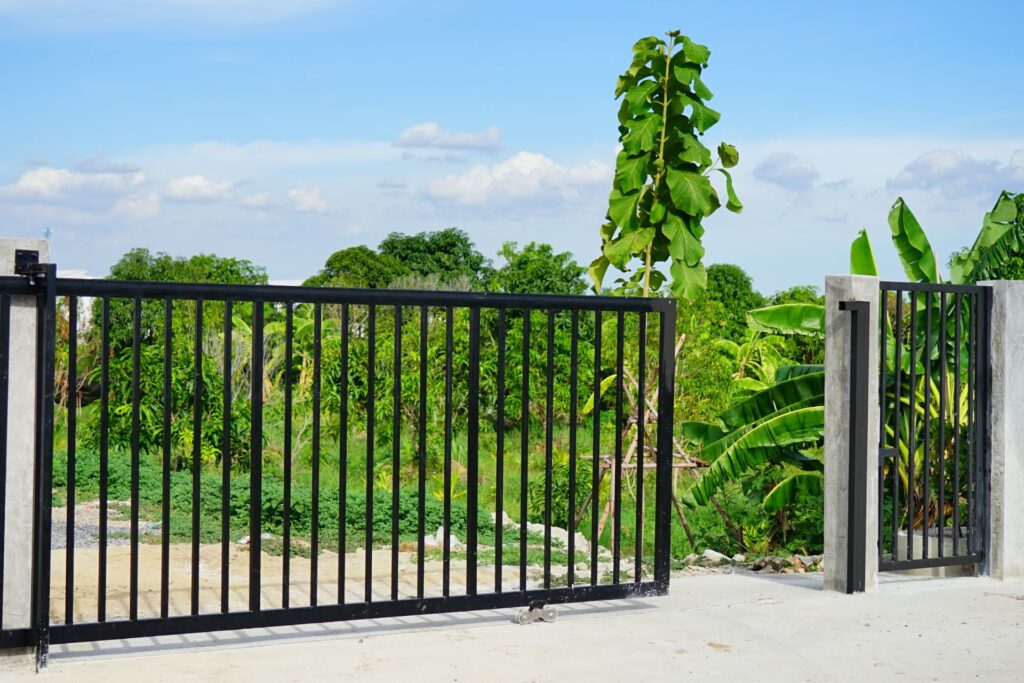
Case Studies And Examples
In the realm of property improvement, the installation of fences along shared driveways stands out as a challenge ripe for collaboration and compliance. This section delves into real-life scenarios and hypothetical examples that shed light on successfully navigated fence projects, emphasizing the paramount importance of cooperative spirit and legal adherence. Through these case studies, we aim to provide actionable insights and best practices for homeowners looking to embark on similar ventures.
Real-Life Scenario: The Harmonious Boundary
In a suburban neighborhood, two neighbors, Alex and Jordan, found themselves at a crossroads over their shared driveway. The need for a fence to demarcate their respective properties became evident, not only for privacy but also for safety reasons. The project’s success hinged on several factors:
Open Communication: Before any plans were drawn, Alex and Jordan engaged in open dialogues to express their needs, concerns, and visions for the fence. This preliminary step fostered mutual understanding and set a cooperative tone for the project.
Joint Planning: They jointly consulted with a fencing contractor, who provided expert advice on design options that would complement both properties while ensuring functionality. This collaborative planning phase was crucial for aligning their expectations and achieving a cohesive look.
Legal Compliance: Recognizing the importance of adherence to local zoning laws and regulations, Alex and Jordan conducted thorough research to ensure their fence project complied with all legal requirements. This due diligence prevented potential legal disputes and ensured the fence’s longevity.
Shared Costs: Understanding that the fence would benefit both parties, they agreed on a fair cost-sharing arrangement. This financial agreement underscored their commitment to the project and reinforced their partnership.
This real-life example highlights how effective communication, shared planning, legal compliance, and equitable cost-sharing can lead to the successful completion of a fence project on a shared driveway, enhancing both properties while fostering good neighborly relations.
Hypothetical Example: The Challenge of Aesthetic Unity
Imagine a scenario where two neighboring homeowners, Casey and Taylor, decide to install a fence along their shared driveway. Despite differing tastes in design, they aim to find a solution that satisfies both parties and complies with local regulations. The project’s triumph is attributed to:
Design Compromise: Casey and Taylor dedicated time to explore various fence designs, eventually selecting one that harmoniously blended their aesthetic preferences. This compromise was essential for achieving a visually appealing outcome that both could appreciate.
Professional Guidance: They enlisted the help of a landscape architect to ensure that the fence not only looked good but also functioned well within the shared space, considering aspects like driveway access and environmental impact.
Regulatory Adherence: The homeowners made it a priority to obtain all necessary permits and ensure that their fence project was fully compliant with local bylaws, preventing any legal issues from arising post-installation.
Clear Communication: Throughout the project, Casey and Taylor maintained open lines of communication, regularly updating each other on progress and addressing any concerns promptly. This transparency helped avoid misunderstandings and kept the project on track.
By focusing on design compromise, seeking professional guidance, adhering to regulations, and prioritizing clear communication, Casey and Taylor were able to navigate the complexities of their fence installation, resulting in a shared driveway boundary that met both their needs and enhanced the beauty of their properties.
Fence projects on shared driveways present unique challenges, but as demonstrated through the above case studies, they also offer opportunities for collaboration, innovation, and mutual respect. Whether through real-life scenarios or hypothetical examples, the key to success lies in effective communication, careful planning, legal compliance, and a willingness to find common ground. By embracing these principles, homeowners can navigate the complexities of shared driveway fence projects, resulting in outcomes that are both functional and aesthetically pleasing, and foster lasting positive relationships between neighbors.
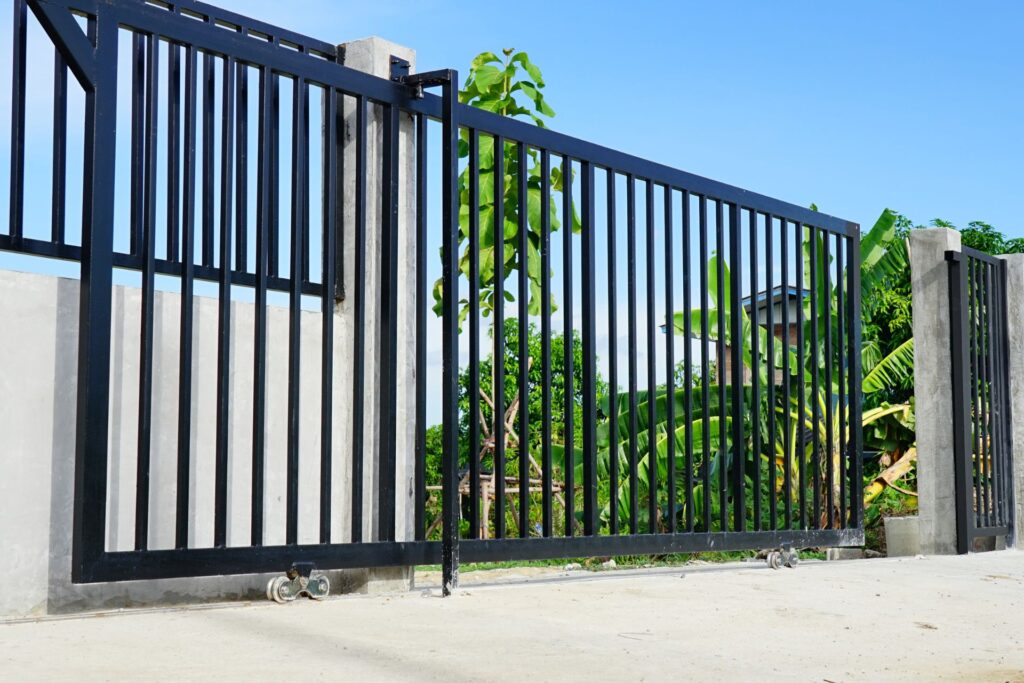
FAQs: About Building Fences On Shared Driveways In NZ
Do I need permission from my neighbor to build a fence on a shared driveway?
Yes, since the driveway is shared, it’s crucial to discuss your plans with your neighbor and obtain their agreement. This ensures both parties are on board with the project and helps avoid disputes.
What legal documents should I consult before building a fence on a shared driveway?
Review your property’s title deeds and any easement agreements related to the shared driveway. These documents outline rights and responsibilities, which are essential to understand before proceeding.
Is it necessary to get building consent from the local council for a fence on a shared driveway?
It depends on the specifics of your project, including height and materials. Always check with your local council as requirements can vary. In some cases, a simple notification may suffice, while others may require a full consent process.
How can I ensure the fence design is suitable for a shared driveway?
Considerations should include maintaining access, visibility around corners, and ensuring the design complements both properties. Discussing potential designs with your neighbor and seeking professional advice can also help.
What are some common disputes related to building fences on shared driveways and how can they be resolved?
Disputes often arise over the fence’s location, design, or cost. Resolution starts with open communication and negotiation. If an agreement can’t be reached, mediation or legal advice may be necessary.
Can I ask my neighbor to contribute to the cost of the fence?
Under the Fencing Act 1978, neighbors are typically required to share the cost of boundary fences. However, agreements on shared driveways might differ, so it’s best to discuss and agree on any cost-sharing arrangements upfront.
What happens if my neighbor and I cannot agree on the fence?
If negotiation fails, you can seek mediation through community law services or, as a last resort, take the dispute to the Disputes Tribunal. It’s advisable to exhaust all avenues of communication and negotiation first.
How can I make sure the fence adds to the aesthetic appeal of our properties?
Choose designs and materials that complement the surrounding environment and consider the architectural style of both homes. Involving your neighbor in the design process can also help ensure mutual satisfaction.
Are there any specific materials recommended for fences on shared driveways?
There are no specific materials required, but it’s wise to choose durable, low-maintenance materials that suit the local climate and aesthetic of the neighborhood. Options include wood, metal, and composite materials.
What steps should I take if I’m ready to proceed with building the fence?
First, discuss your plans with your neighbor and reach an agreement. Next, check if you need building consent from your local council. Then, consult with professionals for design and construction. Finally, ensure all agreements with your neighbor and any legal requirements are documented.
Conclusion
Wrapping up our exploration of erecting fences on shared driveways in New Zealand, it’s crucial to highlight the essence of understanding legal frameworks, engaging in effective communication with neighbors, and selecting the right fence design. Navigating the legalities ensures compliance and respect for shared spaces, while open dialogues with neighbors foster a foundation of understanding and empathy, crucial for avoiding disputes and ensuring the project’s success.
Choosing a design that balances aesthetics, functionality, and legal requirements further cements this process’s thoughtfulness. Encouraging readers to approach their fence-building projects with empathy, respect, and due diligence not only reflects the technical aspects of such undertakings but also the importance of community and mutual respect. This approach underlines the broader societal values of cooperation and shared success, making the journey of fence construction a testament to good craftsmanship and neighborliness in the context of New Zealand’s community spirit.
